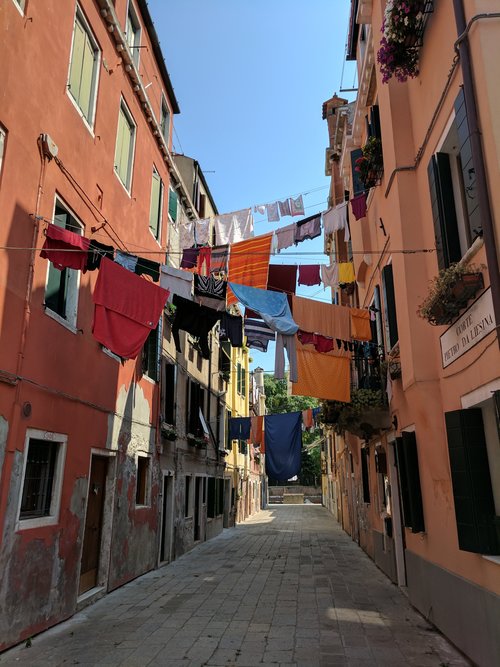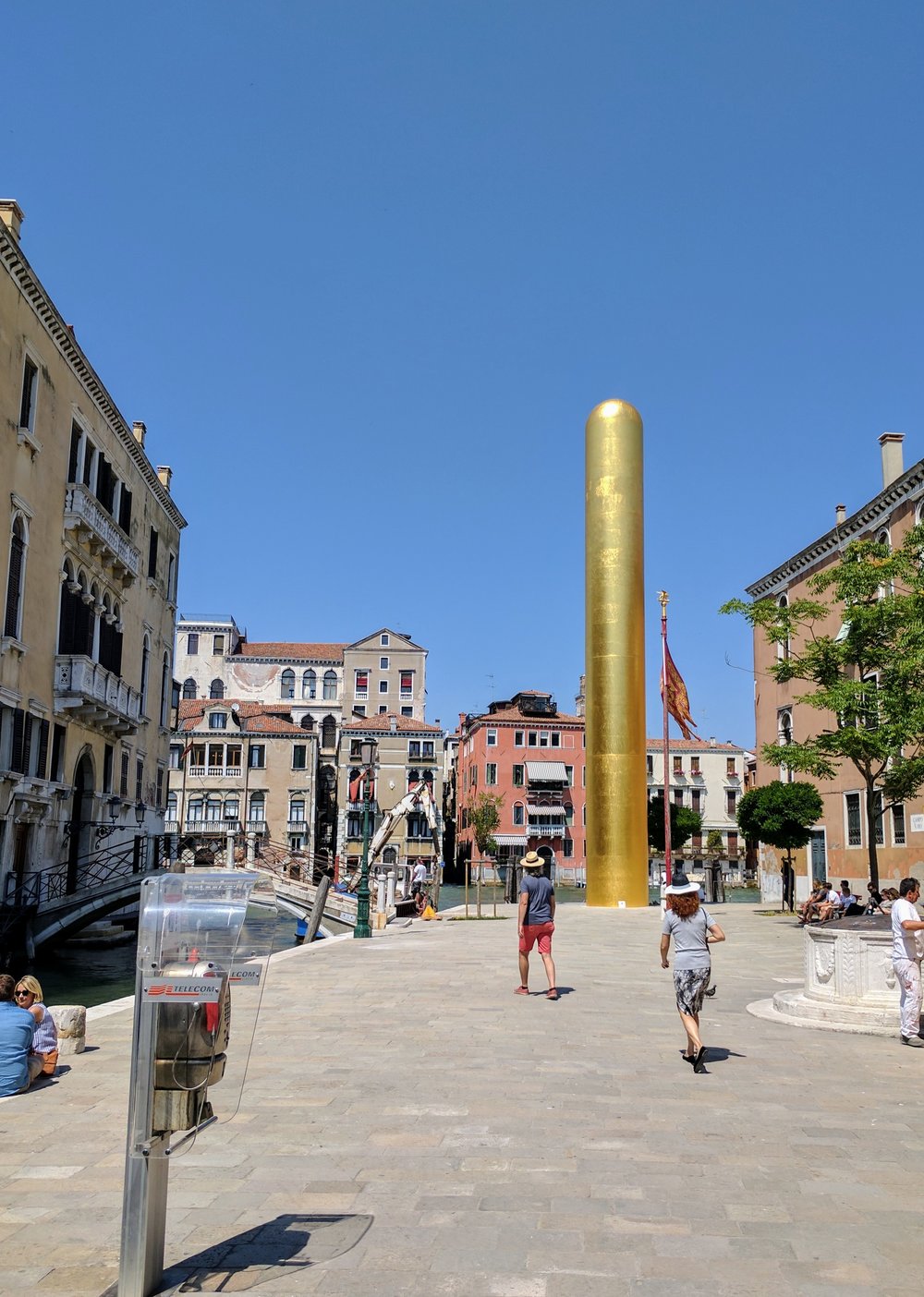Venetian Biennale: East-meets-West
November 16, 2017
by Hazel Antaramian Hofman, Cohort ’17

View of a Venetian Alley near Giardini della Biennale Photo Credit: Jonathan MorganView of a Venetian Alley near Giardini della Biennale Photo Credit: Jonathan artistic act to resist, liberate, and exude generosity is the humanism that inspires the theme of the 2017 Venice Biennale, Viva Arte Viva. It is a humanism that the president of La Biennale di Venezia, Paolo Baratta defines as, “that [which] celebrates mankind’s ability to avoid, through art, being dominated by the powers that govern world affairs, which if left to their own devices can greatly affect the human dimension for the worse.” With 86 national participants and 120 artists, Viva Arte Viva encompasses the unfolding of artistic practice and forms. The pavilions are organized as nine chapters of a book, according to Christine Macel, the Curator of the 57th International Art Exhibition, and each tells a story “that is often discursive and at times paradoxical with detours that mirror the world’s complexities, a multiplicity of approaches and a wide variety of practices.” In the Central Pavilion, there were Pavilion of Artists and Books, and Pavilion of Joys and Fears. Other pavilions in the Arsenale and the Giardino delle Vergini, include Pavilion of the Common, the Pavilion of the Earth, the Pavilion of Traditions, the Pavilion of Shamans, the Dionysian Pavilion, the Pavilion of Colors, and the Pavilion of Time and Infinity.
The present complexity and multiplicity of the Biennale exhibitions speak to a Venice of a similar nature, a baroque nature of sensory overload, the flow of goods, information, and mythologies. The transition of the sensory and its speed of change lends to the baroque qualities found in many of the pavilions and off-site arts in Venice. One of the off-site sculptural pieces erected for the 2017 Biennale is the Golden Tower created by James Lee Byars. The Golden Tower represents the idea of Venice as a baroque topological site as well as being a monument to humanity, the theme of the Biennale. The monumental phallic-like structure sits along the grand canal adjacent to the Palazzo Barbarigo. The gilded surface overloads our visual senses under the Venetian sun, not unlike the gilding found along areas of the façade of the Basilica of San Marco. At the sea entrance of the San Marco Piazza not far from the Palazzo Ducale, two other columns are located. The two columns were twelfth-century war booty from the sacking of Constantinople. The myth is that a third column was lost while it was being removed from the ship. The Golden Tower was created as the present-day third column. The two original columns, San Marco and San Teodoro, bring the past and its sensory history to the present. The Golden Tower reminds us of the lost third column. All three (two from the past and one from the present) are connected by their overlapping presence in time and space, conjuring an emotional overload by its monumentality, material form, and cultural mixing.

The Golden Tower was erected as a monument to humanity, speaking intertextually with the other two columns as a reminder of its metaphorical connection between the East and West. Here the twenty-first century Venetian East-meets-West speaks to the baroque chaos of the thirteenth and fourteenth centuries East-meets-West as expressed by the visual program of the San Marco's basilica and the two columns in the piazza.
